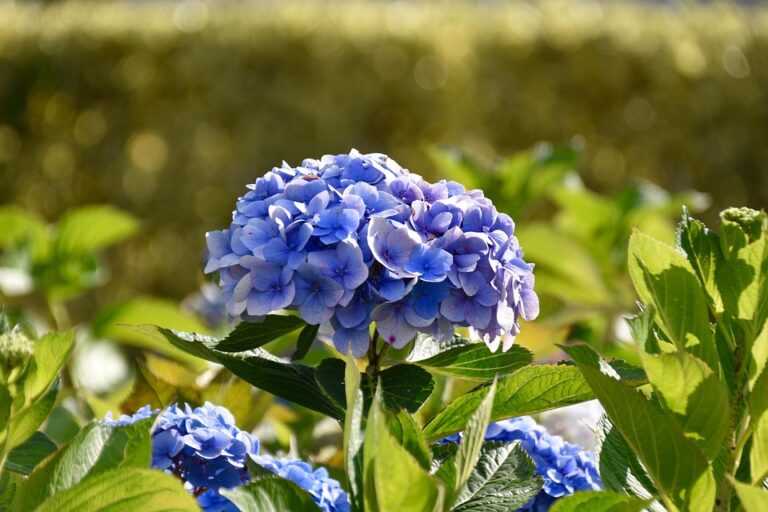How to Prune Climbing Hydrangeas (After Flowering)
Why Timing Matters for Climbing Hydrangeas
💡Core Insight
Climbing hydrangea (Hydrangea anomala subsp. petiolaris) flowers on old wood, so size and shape work belongs right after flowering. Wait until late winter or spring, and you’ll remove the very shoots that were poised to bloom. Post‑bloom summer pruning protects next year’s display. [RHS] [Fine Gardening]
🎯Quick Answer: When and How
- Best timing: Immediately after flowering in summer (often late June–August) so new growth can form next year’s buds by late summer. [Fine Gardening] [Gardeners’ World]
- What to remove: Spent flowerheads, overlong stems beyond the wall plane, dead/diseased/damaged wood, and a little congestion for airflow. [RHS]
- Avoid: Hard pruning late in the season; renovate in stages across summers to maintain some bloom. [RHS]
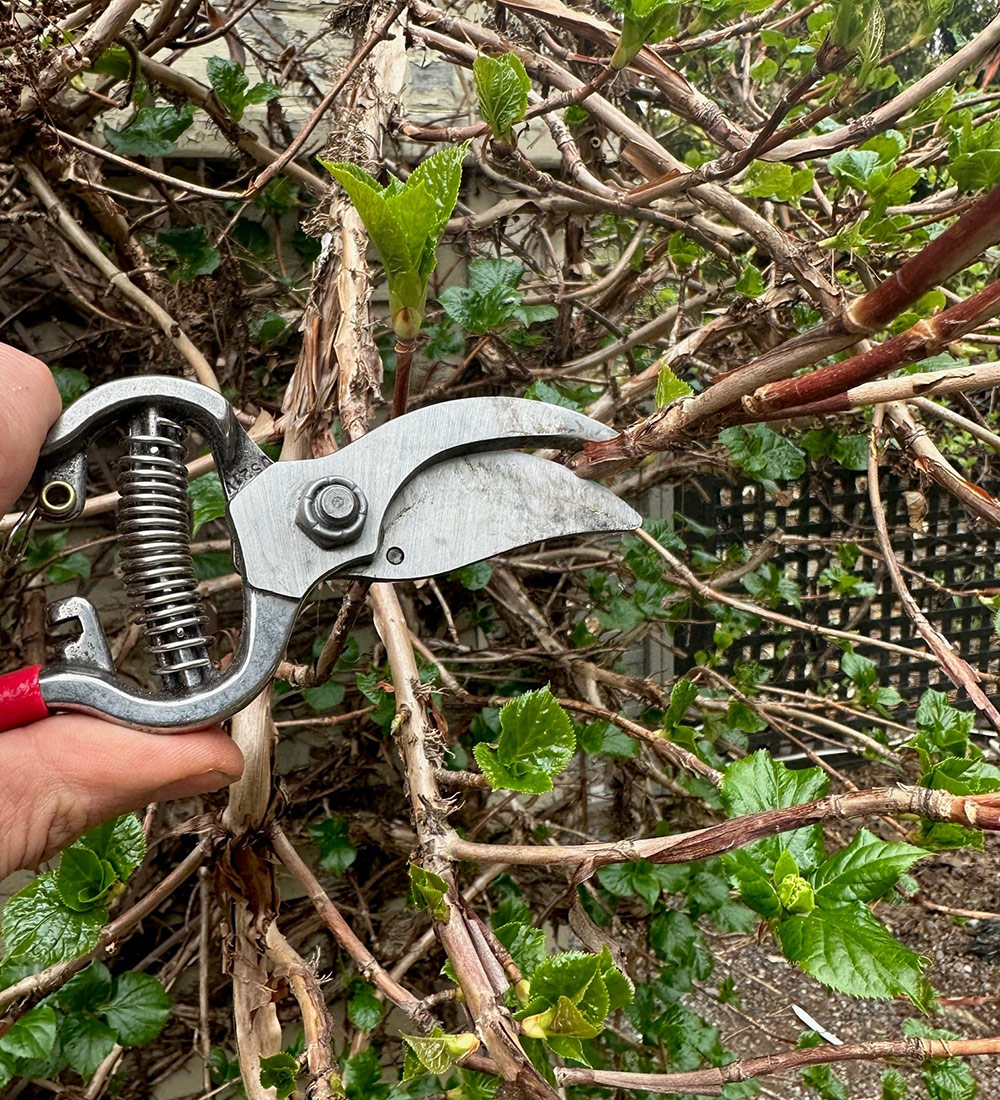
Tools and Setup for Clean, Safe Cuts
🧰What I Use
- Bypass pruners for precise heading cuts; lightweight loppers for thicker laterals; folding saw for old, woody stems
- Soft, UV‑stable ties; stable ladder; padded wall standoffs
- Blade hygiene after diseased cuts; never yank aerial rootlets from masonry—cut first, then ease away
Spring is suitable for removing dead wood; save live‑wood shaping for right after flowering. [UMN Extension]
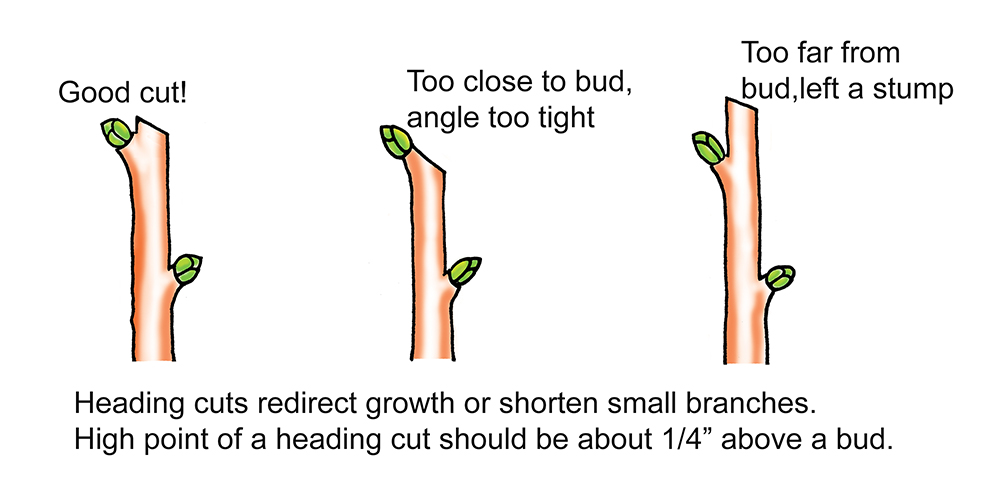
Step‑By‑Step: Pruning After Flowering
1) Deadhead and Tidy
Snip each spent flowerhead back to a healthy pair of leaves. This sharpens the look and redirects energy into forming next year’s buds without sacrificing terminals. [Fine Gardening]
2) Shorten Overlong Shoots
Cut back whippy stems pushing far beyond the support plane. Make cuts just above outward‑facing buds to encourage tidy lateral coverage along the wall or trellis. [RHS]

3) Remove Dead, Diseased, or Damaged Wood
Cut to sound tissue or to a strong lateral. Remove crossings that abrade bark and invite disease. [UMN Extension]
4) Thin Congestion (Lightly)
Open snarled zones by removing a few older or inward stems at their origin. Aim for dappled light and air without stripping the framework—restraint preserves bloom. [UMN Extension]
5) Re‑Tie and Train
Finish by tying retained stems onto the support. Keep leader lines tidy and fan laterals to fill space evenly. [Gardeners’ World]
Support and Training Systems in Detail
🌱Wire Grid and Fixings
- For walls and fences, install horizontal stainless wires at ~12–18 in (30–45 cm) vertical spacing; add a vertical line for the leader.
- Use masonry anchors rated for outdoor load if fixing into brick; for timber, screw‑eyes suffice. Keep a 1–2 in (2.5–5 cm) stand‑off to reduce damp pockets.
- Tie main leader vertically; fan laterals along wires at gentle angles to clothe the surface evenly. Retie annually after flowering. [Gardeners’ World]
On arbors and arches, think symmetry and sightlines: maintain a central “window,” shorten forward‑jutting shoots after bloom, and direct laterals along the curve with soft ties. This prevents wind leverage that can pull the vine off its supports and keeps passageways clear. [Chesapeake/Virginia Tech Extension]
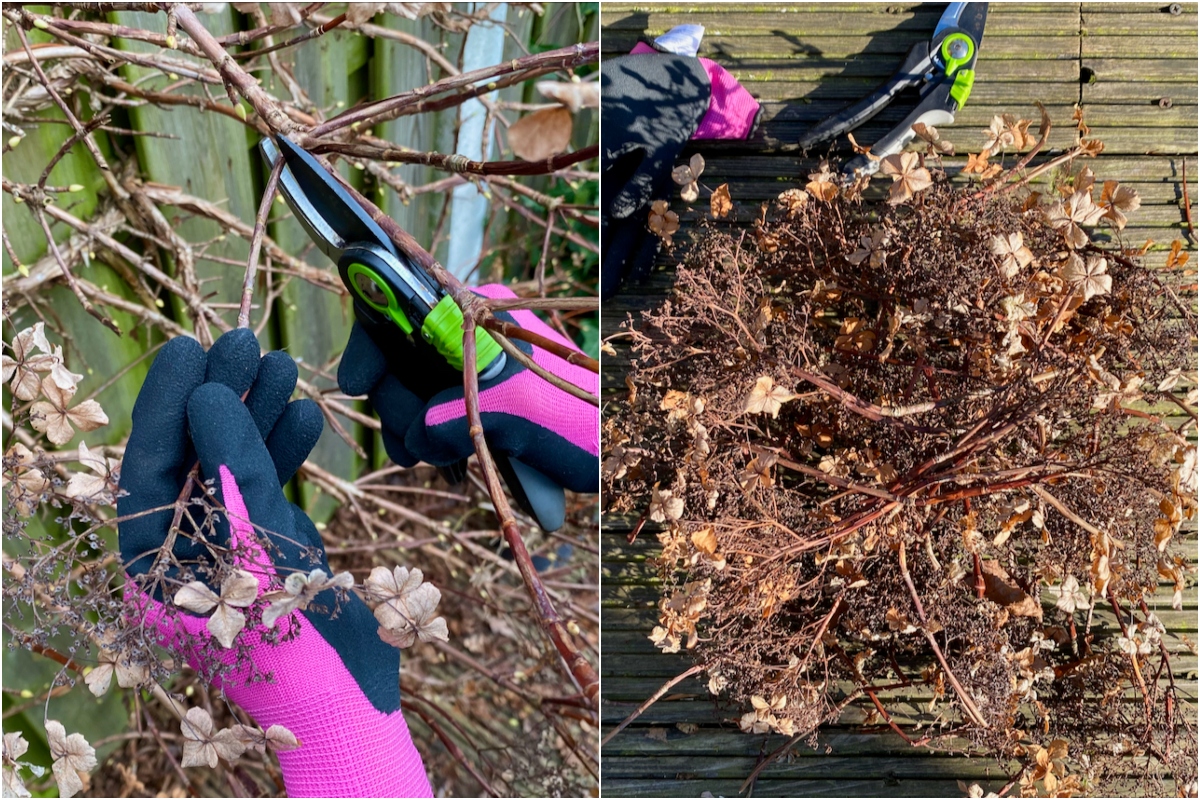
Spur and Cordon Maintenance for Reliable Flowering
Once established, you can treat productive laterals like short “spurs.” After flowering, shorten side shoots to two or three buds from their base where they meet framework stems. The goal is a stable scaffold with compact, flowering laterals that you refresh gradually rather than wholesale. It’s a gentle adaptation of woody climber principles that keeps walls clothed and reduces heavy cutting. Apply lightly and avoid stripping the upper canopy, where climbing hydrangeas flower most generously. [RHS]
Renovation Pruning: Taming Overgrown Vines
🔄Stage It Over Several Summers
Skip the one‑shot hard reset. Instead, remove or shorten a portion of the oldest, least productive framework right after flowering each summer, training fresh laterals into gaps you create. This staged approach maintains coverage and preserves some bloom. Hard pruning can suppress flowers for a couple of years, so patience wins. [RHS]
Three‑Season Renovation Case Study
- Year 1 (post‑bloom): Remove one‑third of the oldest, bare interior stems at their origin; shorten two or three overlong leaders by a third to a lateral; re‑tie the rest.
- Year 2 (post‑bloom): Remove another third of old framework; convert vigorous new shoots into laterals by tipping to outward buds; maintain spurs on productive sideshoots.
- Year 3 (post‑bloom): Remove remaining unproductive old wood; refine spur spacing; keep the top third of the plant fuller to preserve bloom while you shape below. [RHS]
Regional Timing Windows
Safety and Masonry Care Checklist
🧱Do This, Not That
- Cut before detaching stems; don’t yank aerial rootlets off brick or timber.
- Use soft, wide ties to avoid bark damage; retie annually after bloom.
- When reducing near eaves, shorten in stages to prevent sudden weight shifts; never lever a woody leader away from a fix point—saw it cleanly. [Chesapeake/Virginia Tech Extension]
Seasonal Calendar
| Season | Action | Notes |
|---|---|---|
| Late spring–mid summer | Enjoy bloom, plan edits | Observe flowering zones to guide post‑bloom training [The Spruce] |
| Immediately after flowering | Main pruning window | Deadhead, shorten, thin lightly, re‑tie/train [Fine Gardening] |
| Late winter/early spring | Deadwood only | Reserve live‑wood shaping for post‑bloom to protect flowers [Toronto Master Gardeners] |
Common Mistakes and How to Avoid Them
⚠️Costly Errors
- Spring shearing: Removes flower wood; keep spring work to deadwood and tidy old panicles. [RHS]
- Yanking off supports: Breaks bark and anchors; cut first, then ease away and retie. [Chesapeake/Virginia Tech Extension]
- One‑go hard reset: Suppresses bloom for seasons; renovate in stages post‑flowering. [RHS]
Troubleshooting: If It Isn’t Flowering
- Juvenile phase: Young vines may take several years to bloom; prune lightly until established. [UMN Extension]
- Wrong‑time cuts: Late winter/spring pruning removes flower wood; move structural edits to after flowering. [RHS]
- Shade and feeding: Deep shade or high nitrogen pushes leaves over flowers; aim for bright shade and moderate nutrition. [The Spruce]
- Frost damage: Late frosts can brown tips; remove in spring and let new laterals form. [Toronto Master Gardeners]
- Wind scuff and rub: Crossing stems abrade and underperform; remove or re‑tie to prevent damage and encourage healthy laterals. [UMN Extension]
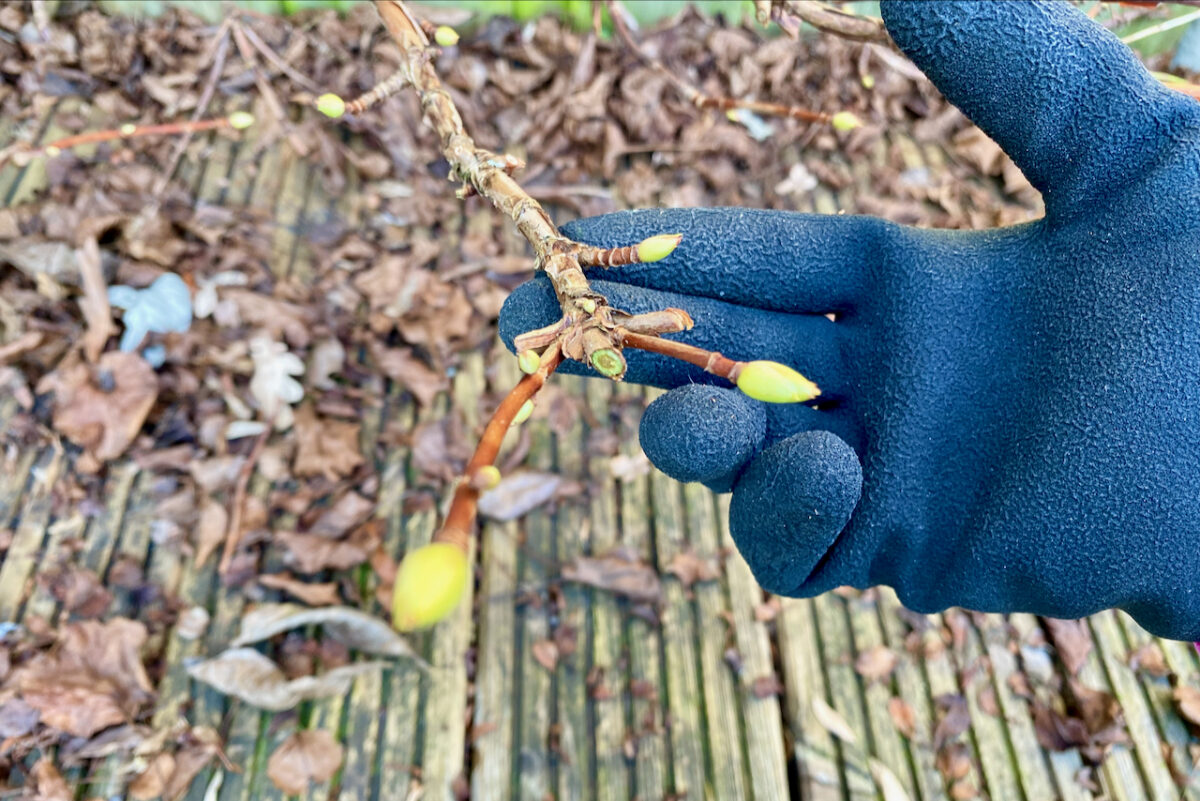
Tool and Product Recommendations (With Reasons)
- Narrow‑nose bypass pruners: Reach into tangles for precise heading cuts above outward buds.
- Light loppers (28–30 in): Cleanly remove older wood without ladder gymnastics.
- Compact folding saw: Safe, controlled removal of woody leaders at origin points.
- Soft, UV‑stable ties: Hold securely without girdling bark; retie annually after bloom.
- Ladder with standoffs: Keeps you off the vine and avoids crushing growth while working. [UMN Extension]
Action Plan for This Week
✅Four Simple Steps
- Walk the vine and mark overlong, outward‑thrusting shoots that break the wall plane.
- Right after flowering, deadhead, shorten marked shoots to outward buds, and thin one or two congested spots.
- Retie the leader and fan laterals along a wire grid for even coverage.
- Block an hour on the calendar next summer for a light, post‑bloom repeat—small, timely edits beat big, late ones. [Fine Gardening] [RHS]
